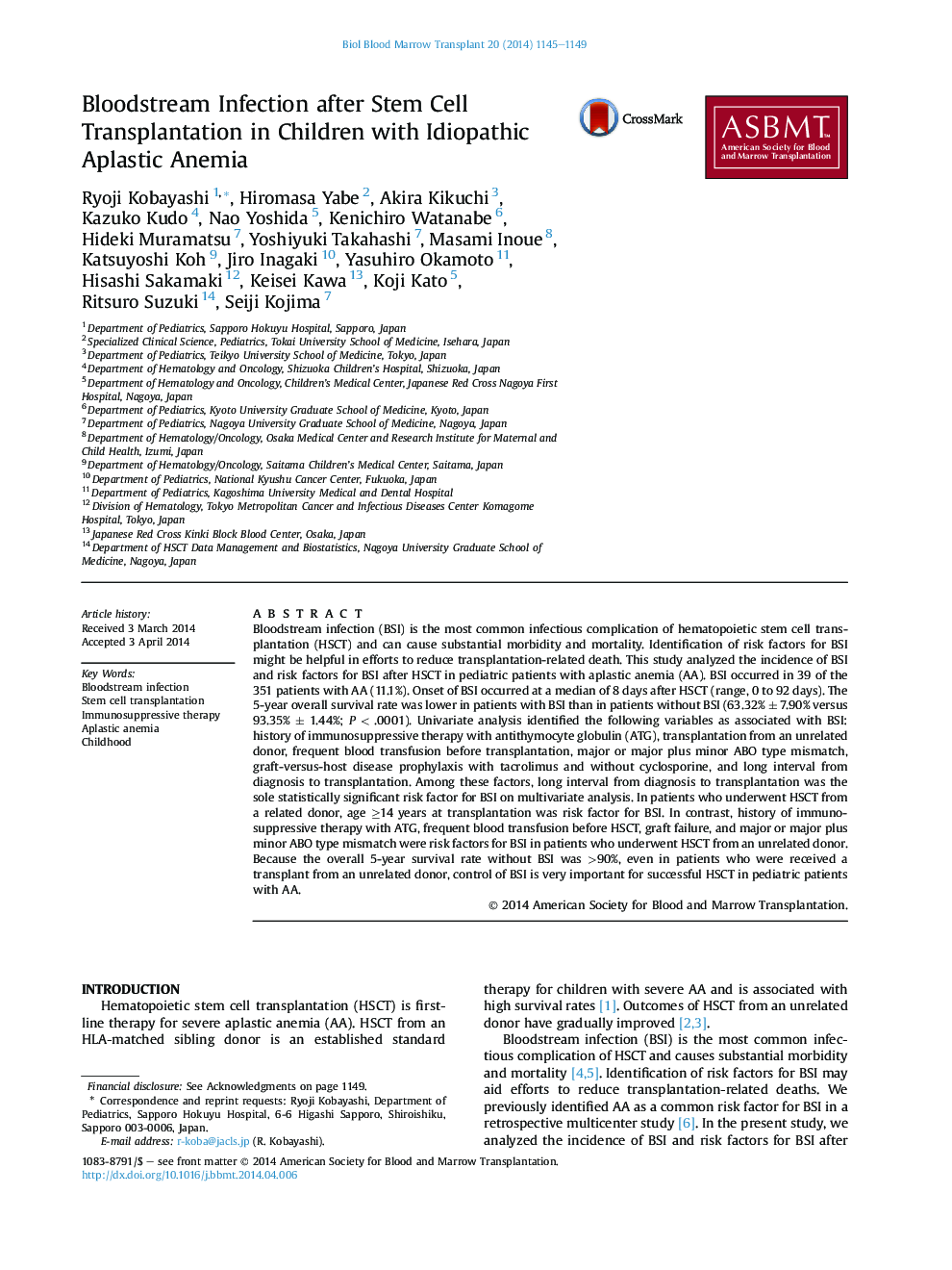| کد مقاله | کد نشریه | سال انتشار | مقاله انگلیسی | نسخه تمام متن |
|---|---|---|---|---|
| 2102045 | 1546277 | 2014 | 5 صفحه PDF | دانلود رایگان |
Bloodstream infection (BSI) is the most common infectious complication of hematopoietic stem cell transplantation (HSCT) and can cause substantial morbidity and mortality. Identification of risk factors for BSI might be helpful in efforts to reduce transplantation-related death. This study analyzed the incidence of BSI and risk factors for BSI after HSCT in pediatric patients with aplastic anemia (AA). BSI occurred in 39 of the 351 patients with AA (11.1%). Onset of BSI occurred at a median of 8 days after HSCT (range, 0 to 92 days). The 5-year overall survival rate was lower in patients with BSI than in patients without BSI (63.32% ± 7.90% versus 93.35% ± 1.44%; P < .0001). Univariate analysis identified the following variables as associated with BSI: history of immunosuppressive therapy with antithymocyte globulin (ATG), transplantation from an unrelated donor, frequent blood transfusion before transplantation, major or major plus minor ABO type mismatch, graft-versus-host disease prophylaxis with tacrolimus and without cyclosporine, and long interval from diagnosis to transplantation. Among these factors, long interval from diagnosis to transplantation was the sole statistically significant risk factor for BSI on multivariate analysis. In patients who underwent HSCT from a related donor, age ≥14 years at transplantation was risk factor for BSI. In contrast, history of immunosuppressive therapy with ATG, frequent blood transfusion before HSCT, graft failure, and major or major plus minor ABO type mismatch were risk factors for BSI in patients who underwent HSCT from an unrelated donor. Because the overall 5-year survival rate without BSI was >90%, even in patients who were received a transplant from an unrelated donor, control of BSI is very important for successful HSCT in pediatric patients with AA.
Journal: - Volume 20, Issue 8, August 2014, Pages 1145–1149
